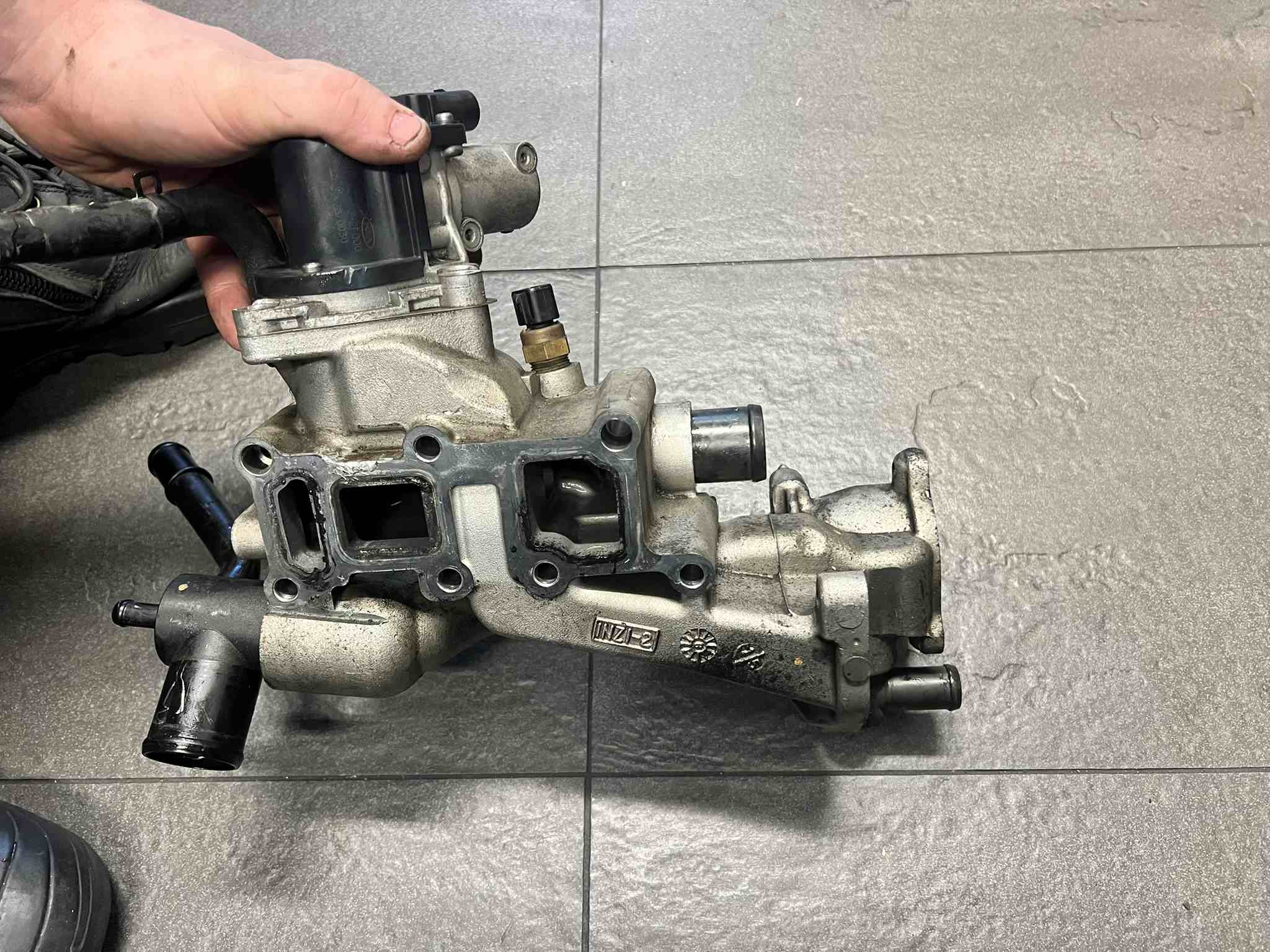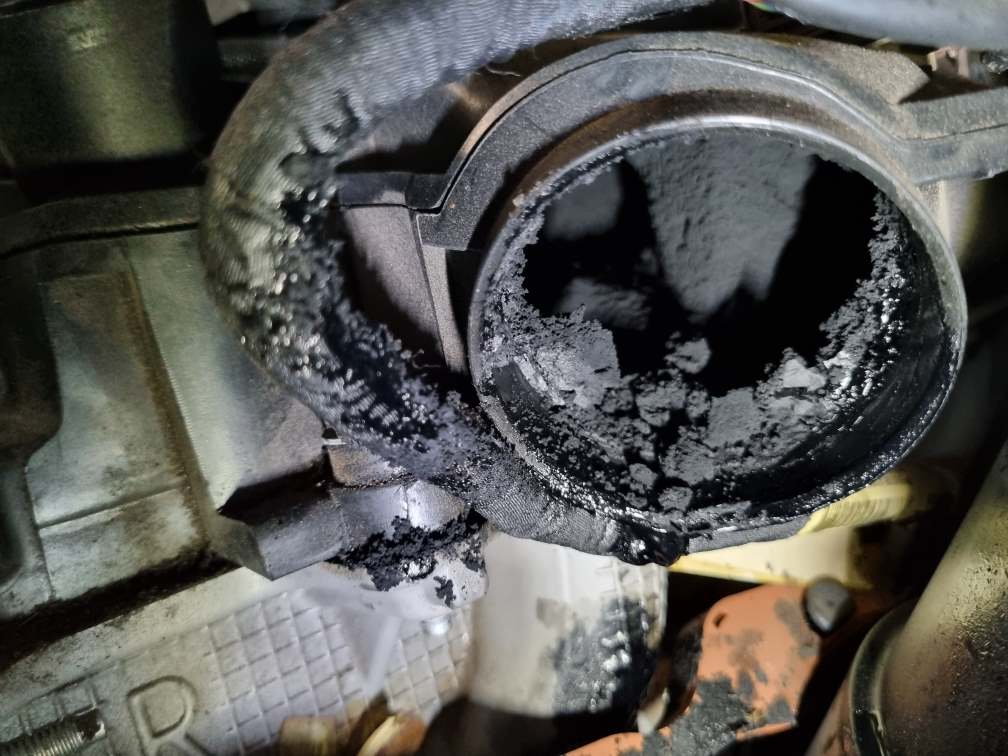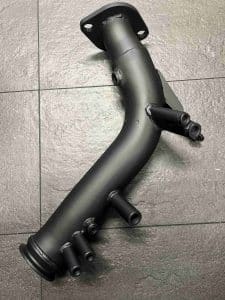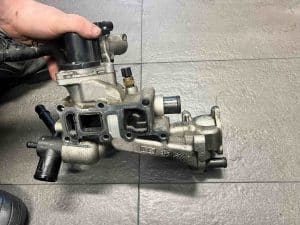DPF vs EGR vs AdBlue: What’s Really Clogging Your Car?

DPF vs EGR vs AdBlue: What’s Really Clogging Your Car?
DPF vs EGR vs AdBlue: Let’s look at what’s Really Clogging Your Car?
Modern Diesels Are Smarter — and More Blocked Than Ever.
DPF vs EGR vs AdBlue post is about knowledge and written with the intention to impower you first and to offer our solution to a potential problem. So your car’s lost power. Fuel economy is down. Maybe it’s blowing smoke, maybe the DPF light’s flashing like it’s calling for help. Or maybe you’ve been told you need a new EGR valve, or worse, that your AdBlue system has failed and your car will stop running in 800km unless you sacrifice a goat and $5,000 to the dealership. One of our customers came from an Audi dealership with a $4,500 quote to replace the AdBlue pump on his Audi Q5.
Let’s clear the air (literally). At Brisbane Tuning & Turbo, we deal with these problems every day. Whether it’s a HiLux towing a caravan, a tradie’s Ranger on limp mode, or a Eanglish SUV with more sensors than horsepower in the Ford engine— the same questions come up again and again:
Is it the DPF? The EGR? Or the AdBlue?
The truth is, it’s usually all three — either failing together, or blaming each other like three kids who all deny eating the last Tim Tam. Here’s how to figure out what’s actually going on, and what to do before you replace half the engine bay.

Build Up carbon
What Does Each System Actually Do?
EGR (Exhaust Gas Recirculation)
EGR takes a portion of exhaust gas and feeds it back into the intake. Why? To reduce combustion temperatures and NOx emissions. Sounds fine on paper — until the inside of your manifold looks like a Vegemite sandwich left in the sun.
When it fails: You’ll see low power, sluggish throttle, and often black smoke. You might also get DTCs like P0401 (insufficient flow) or P049B (flow stuck open). A stuck EGR valve is the gateway drug to full carbon buildup and turbo grief. (Click here to read more about EGR Delete vs EGR Clean)
DPF (Diesel Particulate Filter)
DPF’s job is to trap soot and periodically burn it off during “regeneration.” Problem is, regens need speed, load, and good sensors. If you do short trips or the sensors lie (common), the DPF fills up. And when it does, the ECU pulls power and throws on the warning lights like it’s Christmas.
When it fails: Limp mode. High EGTs (Exaust Gas Temperture). Backpressure that chokes the turbo. You’ll see codes like P2463 (DPF soot accumulation) or P242F (ash overload). And eventually — expensive repairs, including a new DPF brick.
In the photo you can see a ready made straight exaust pipe with all the neccesary bungs to keep the whole system work as it should.

HiLux DPF Delete Exaust section
AdBlue (SCR System)
AdBlue is injected into the exhaust to reduce NOx in post-DPF systems. It works with a catalyst and a controller that measures everything. When it works, fine. But when the tank heater fails, or the NOx sensor gives up, you get locked into a countdown.
When it fails: Messages like “Start inhibited in 300km.” Codes like P20EE (SCR efficiency below threshold) or P2BA9 (DEF fluid quality). And a sinking feeling that your car might quit in the middle of the highway.
How They All Work (or Fail) Together

EGR Valve – think about replacing cost
Here’s the real kicker: these systems overlap. A failing EGR makes your DPF clog faster. A blocked DPF raises backpressure and affects AdBlue dosing. A failed NOx sensor can trick the ECU into changing EGR strategy. It’s not just a domino effect — frankly it’s a pile-up. Now imagine the fun explaining it all to a customer…
We’ve had customers throw $2,000 at a DPF replacement only to find out the actual problem was a stuck EGR. Or replace a $1,200 NOx sensor because the dealership didn’t bother checking the DEF injector.
That’s why we always start with one thing: proper diagnostics.
What We See Most in Brisbane
At Brisbane Tuning & Turbo, here are the patterns we see every week:
A PX Ranger towing up the Toowoomba range hits limp mode due to DPF soot. But root cause? EGR stuck open, feeding soot through the turbo.
A CX-5 comes in with 6+ codes — P20EE, P0401, P2463. The DPF is fine. The pressure sensor was misreporting, causing over-regens and clogging the EGR instead.
A HiLux with AdBlue countdown at 800km. We scan it — turns out the heater in the tank has failed, a known issue. The dealer quoted $3,800. We fix it for a third.
Why Deletes Are So Popular?
Let’s be honest — these systems were designed to meet emissions targets in Europe, not deal with Brisbane heat, traffic, or towing up the Bruce Hwy with a 2.5-tonne caravan.
When you’re out of warranty and the DPF/EGR/AdBlue system becomes a financial liability, a delete and tune becomes the logical move.
Done properly, you can:
Eliminate soot blockages permanently.
Reduce fuel consumption.
Lower EGTs and prolong turbo life.
Improve throttle response and towing performance.
And unlike backyard flash tunes, we do it with scan tools, dyno testing, and a safety-first approach. No black smoke, no drama, just results.
Why It Still Starts with a Scan?
Not every car needs a delete. Some just need an EGR clean, a new pressure sensor, or a simple reflash, or an enforced regeneration. That’s why at Brisbane Tuning & Turbo we always offer a $145 Scan + Quote first.
What you get:
Full diagnostic scan (Autel, VCDS, Forscan, etc.)
EGR/DPF/AdBlue data logging.
Pressure sensor verification.
Dyno test (if needed).
A clear plan of what to fix, remove, or tune.
And if you go ahead with the work, that $145 goes toward the job.
Case Study: Land Cruiser 200 Series
Came in for low power and poor economy. Dealer quoted $6,800 for new DPF and injectors. We scanned it — turns out the EGR was 90% clogged and MAP sensor was coked up.
Solution? Deleted EGR, recalibrated MAP, dyno-tuned. Final cost: $2,600. Customer left smiling — and towing uphill easy again.
Bottom Line: Don’t Guess What’s Clogging Your Car.
Modern diesels are great — when they’re working. But between DPFs that don’t regen, EGR valves that carbon up, and AdBlue systems that cry wolf, it’s easy to waste thousands chasing the wrong fix.
That’s why we created our diagnostics-first process. No pressure. No guesswork. Just honest advice from a team that actually understands what’s under the bonnet.
If you’re seeing warning lights, smoke, or power loss — book your Scan + Quote today and get the truth before spending big.